Introduction
The Oregon Department of Fish and Wildlife (ODFW) plays a vital role in managing the state’s wildlife and hunting statistics. Established to ensure sustainable wildlife populations, the ODFW provides critical data and insights to both hunters and conservationists alike. This information is essential for informed decision-making and responsible hunting practices.
Harvest statistics are more than just numbers; they provide a snapshot of wildlife populations and hunting trends across Oregon. By analyzing the data collected each year, we can better understand how various species are faring in their natural habitats. These insights help the ODFW develop effective management strategies to maintain balance in the ecosystem.
In this article, we will dive into the most recent harvest statistics, including big game and small game data from the last few years. We’ll cover trends in species populations, hunter participation rates, and the impact of various hunting methods on overall harvest numbers. Whether you’re an avid hunter, a casual observer, or simply curious about Oregon’s wildlife management, this overview will provide you with a comprehensive understanding of ODFW harvest statistics.
Get ready to uncover the fascinating world of hunting trends in Oregon! We’ll highlight key findings from the 2023 hunting season, explore how these statistics influence future hunting regulations, and provide tips for hunters looking to optimize their experiences in the field. And speaking of optimization, what better way to elevate your hunting experience than with a Hunting Knife Set? A sharp knife is essential for field dressing game, and it can also be handy for other outdoor tasks. Invest in one, and you’ll be the envy of your hunting buddies!

2023 ODFW Harvest Statistics
Overview of 2023 Harvest Data
The 2023 hunting season marked a year of notable trends and shifts in harvest statistics. As hunters took to the fields, the ODFW collected data that reveals important insights into the state’s wildlife dynamics. Early reports indicated a slight increase in overall hunter participation compared to previous years, reflecting a growing interest in outdoor activities and wildlife management.
This year’s statistics are crucial for both hunters and wildlife managers. By understanding which species are thriving and which are experiencing declines, the ODFW can implement targeted conservation efforts. For example, if deer populations are found to be stable, that could indicate successful management practices. Conversely, if elk numbers decrease significantly, it may prompt a re-evaluation of hunting regulations or habitat preservation efforts. Don’t forget to gear up for your next adventure with a reliable Outdoor Survival Gear Kit! Because nothing says “prepared” like having a mini-camp in your backpack.
In 2023, the breakdown of species harvested will be a focal point. We will delve into detailed statistics, covering the differences between public and private land harvests for key species, such as deer and elk. Insights into hunting methods—ranging from archery to muzzleloader—will also shed light on the effectiveness of various approaches in different environments.
Overall, the 2023 harvest data will serve as a cornerstone for future hunting strategies and conservation measures, ensuring that Oregon can maintain its rich wildlife heritage for generations to come. Keep reading to discover the key species harvested this year and what those numbers really mean for hunters and wildlife alike.
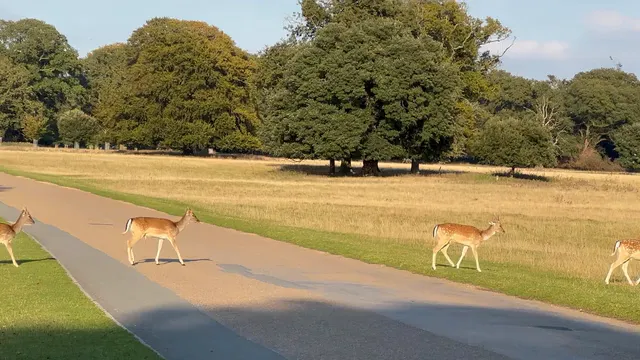
Key Species Harvested
2023 Antlerless Deer Harvest
In 2023, the antlerless deer harvest showcased an intriguing dynamic between public and private land hunters. Public lands accounted for approximately 60% of the total antlerless deer harvested. This reflects a consistent trend, as many hunters prefer the vast, accessible terrains offered by state-managed wildlife areas. Meanwhile, private lands contributed around 40%, emphasizing the role of landowner cooperation in managing deer populations. This balance is crucial for maintaining healthy herds and ensuring ethical hunting practices. If you’re planning to spend a lot of time outdoors, consider investing in a sturdy pair of Binoculars for Hunting. They can make spotting game a whole lot easier!

2023 Elk Harvest
The elk harvest in 2023 revealed a similar public-private split. Public lands were responsible for about 70% of the total elk harvested, while private lands made up the remaining 30%. This trend highlights the importance of public hunting areas, which often provide better access and a more diverse hunting experience. Elk populations appear stable, suggesting effective management strategies are in place. However, ongoing monitoring is essential to ensure this balance continues. And while you’re out there, don’t forget to bring a Portable Camping Stove for those delicious field meals. Nothing beats a hot meal after a long day of hunting!
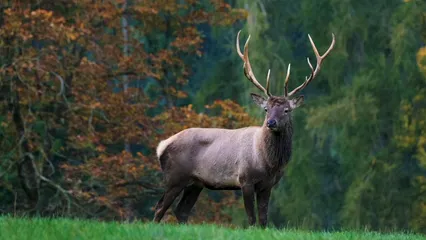
2023 Black Bear and Cougar Harvests
The 2023 seasons for black bear and cougar hunting brought forth some fascinating statistics. Black bear harvests were notably high this year, with around 5,000 bears reported taken. A significant portion, about 65%, came from public lands. Cougars, on the other hand, saw a total harvest of approximately 1,200. Interestingly, private lands contributed more to cougar harvests, accounting for about 60%. This distinction emphasizes different hunting patterns and preferences among hunters for these elusive predators. To navigate these adventures, a reliable Tactical Backpack can be a game-changer. It’s perfect for carrying all your essential gear while keeping your hands free!
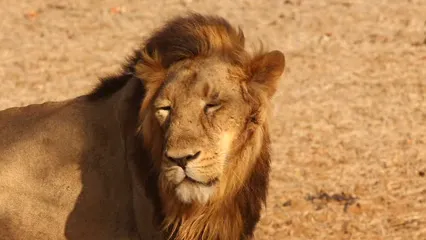
2023 Muzzleloader and Archery Harvests
When looking at hunting methods, muzzleloader and archery harvests showcased distinct trends. The muzzleloader harvest for 2023 reached around 2,500 deer and elk combined, with public lands hosting 75% of these hunts. Archery enthusiasts also saw successful seasons, with nearly 3,000 animals harvested. Here, public lands were favored again, making up 80% of the archery harvest. The effectiveness of these methods remains evident, especially among dedicated hunters who appreciate the challenges they present. And to make sure you’re ready for those challenging shots, consider a Hunting Rangefinder. It’ll help you gauge distances accurately and make those shots count!

These 2023 harvest statistics not only shed light on species dynamics but also underscore the importance of public land access in Oregon’s hunting culture. Understanding these figures helps us appreciate the delicate balance between wildlife management and hunter participation, ensuring a sustainable future for both.
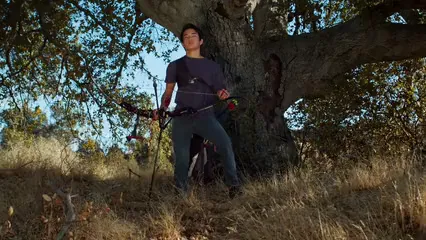
2020 Harvest Statistics
The year 2020 was certainly a unique one, thanks to COVID-19. Hunting participation took a rollercoaster ride. Initially, many hunters hesitated to venture out. Safety and health concerns loomed large. However, as the season progressed, interest spiked. With travel restrictions in place, more folks explored local hunting opportunities.
Interestingly, the pandemic fueled a surge in first-time hunters. Many sought outdoor activities to unwind from pandemic pressures. According to ODFW, there was a noticeable increase in hunter numbers. This uptick had a direct impact on overall harvest numbers. And for those new hunters, a First Aid Kit is a must-have to ensure safety on your adventures!

While the total deer harvest remained stable, the elk harvest saw fluctuations. Public lands were still the preferred choice for many hunters. The statistics showed that approximately 65% of the elk harvested came from public areas. This trend underscores the importance of maintaining accessible hunting grounds.
Moreover, the rise in first-time hunters brought new dynamics to the hunting community. Veteran hunters shared their expertise, creating a sense of camaraderie. This shift contributed to more educational hunting experiences, with mentorship on the rise. Overall, 2020 presented challenges and opportunities for the hunting community, shaping future seasons.
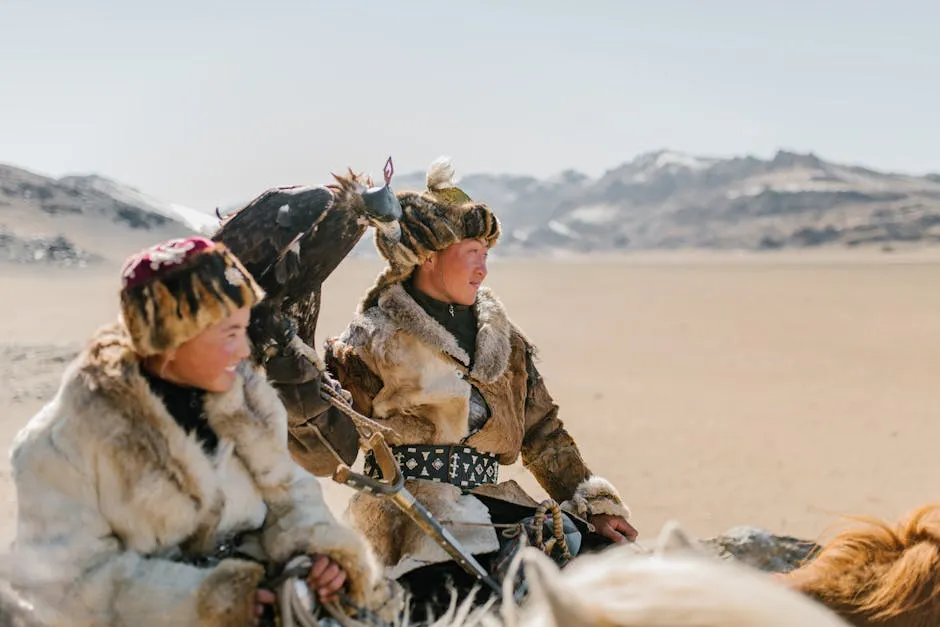
2019-2015 Harvest Statistics
Looking back from 2019 to 2015 reveals intriguing trends in hunting participation and species popularity. Hunter participation fluctuated during these years. In 2019, the number of hunters reached a peak, driven by favorable weather and newly introduced hunting programs.
During 2018, a significant number of hunters pursued deer, particularly mule deer, which saw a rise in popularity. Whitetail deer, while still favored, took a backseat. The data from ODFW indicated that mule deer accounted for about 55% of the total deer harvest in Oregon during this time.
The years leading up to 2019 also highlighted the increasing interest in elk hunting. Elk populations remained stable, making them a popular target for hunters. In 2017, elk harvest numbers soared due to effective management strategies.
However, the decline in hunter participation in 2016 raised concerns. Factors included changing demographics and access issues. The ODFW responded with initiatives aimed at attracting new hunters. This included outreach programs and collaborations with local organizations. Thus, trends from 2015 to 2019 show a mix of challenges and successes, highlighting the evolving landscape of hunting in Oregon.
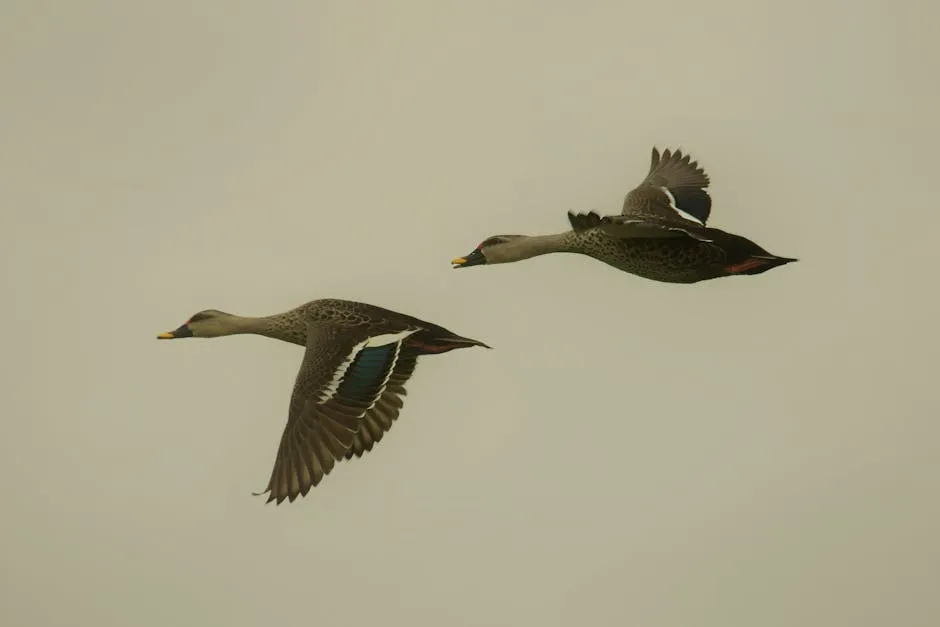
Comparative Analysis
Graphs and charts are the unsung heroes of data presentation. They tell stories that numbers alone can’t. When examining harvest statistics over the years, key species like deer and elk stand out prominently.
Data shows a clear upward trend in deer harvest from 2015 to 2019, reaching its peak in 2019. Contrarily, elk harvest numbers fluctuated, reflecting changes in regulations and environmental factors. For instance, new hunting zones and season adjustments played a pivotal role in these fluctuations.
Environmental factors, including weather conditions, also influenced hunting success. Hunters reported that milder winters allowed for better accessibility to hunting areas. Public interest surged, particularly for family-oriented hunting programs. And let’s not forget about the importance of staying visible and safe with a Camouflage Clothing. It not only helps you blend in but also keeps you warm!

Social media played a significant role in shaping public interest. Engagement grew as hunters shared experiences and successes online. This created a ripple effect, encouraging others to participate.
In summary, the comparative analysis not only reveals trends but also illustrates how regulations, environmental factors, and public interest intertwine, shaping the future of hunting in Oregon.

Elk
Elk hunting in Oregon continues to attract enthusiasts from all walks of life. The 2023 statistics reveal interesting trends, particularly in popular hunting units. Units like the Cascade Mountains and the Wallowa Mountains remain favorites among hunters. These areas boast robust elk populations and stunning landscapes, making them ideal for memorable hunting trips.
In 2023, hunters reported a solid harvest, with public land yielding around 70% of the total elk taken. This highlights the importance of accessible hunting grounds. Private lands, while important, only contributed about 30%. This split reflects a consistent trend favoring public hunting areas, often rich in resources and wildlife. If you’re looking to attract wildlife to your favorite spot, consider setting up a Deer Feeder. It can make all the difference in your hunting success!
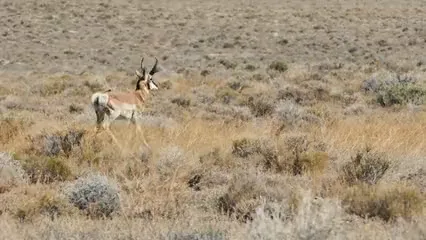
Elk hunting requires patience and skill. The thrill of tracking these majestic creatures keeps hunters coming back year after year. With various hunting methods available, including archery and muzzleloader, every hunter can find a technique that suits them. Increased participation in elk hunts indicates a healthy interest in sustaining wildlife populations and enhancing outdoor recreation.

Pronghorn and Other Species
Pronghorn hunting remains a popular pursuit in Oregon. In 2023, hunters harvested approximately 1,200 pronghorn, primarily from eastern Oregon. This number underscores the importance of effective management strategies in maintaining healthy populations. The pronghorn’s adaptability to diverse habitats contributes to their success in the wild. If you’re looking for a great way to document your hunting adventures, a Nature Journal can be a perfect companion!

Bighorn sheep also made a notable appearance in the 2023 statistics. With a harvest total of around 200, these elusive animals challenge even the most seasoned hunters. Their rugged terrain and keen senses require a unique skill set.
Other game animals, such as black bears and cougars, continue to thrive. Black bear harvests reached approximately 5,000, while cougar numbers hovered around 1,200. These figures reflect the need for ongoing management efforts to balance predator and prey populations, ensuring a healthy ecosystem for all. And for those long days in the field, a Portable Water Filter is essential for staying hydrated!
Hunting Methods and Their Impact
Comparison of hunting methods reveals intriguing insights into harvest success rates. In 2023, rifle hunters enjoyed a success rate of approximately 37%, while archery enthusiasts achieved around 15%. Muzzleloader hunters, however, found their success rate at a modest 9%.
The popularity of each method varies among hunters. Many prefer rifles for their convenience and efficiency. Archery offers a unique challenge, attracting those looking for a more immersive experience. Muzzleloader hunting appeals to a niche group seeking traditional methods. To enhance your hunting experience, consider using Game Calls to attract your target.
Overall harvest numbers reflect these preferences. The higher success rates for rifles contribute significantly to total harvest figures. However, the archery and muzzleloader hunts foster a sense of community and camaraderie among hunters, adding value beyond mere statistics. As trends evolve, understanding the impact of these methods on harvest numbers is crucial for wildlife management and future hunting regulations.

Future Trends and Predictions
As we gaze into the crystal ball of hunting participation and wildlife populations, the current data indicates some intriguing trends. The rise in outdoor activities during the past few years seems to suggest a growing interest in hunting. More first-time hunters are joining the ranks, likely fueled by the pandemic’s push for outdoor recreation. This uptick could lead to increased competition for hunting tags and a shift in the dynamics of wildlife management.
However, it’s not all sunshine and rainbows. Climate change looms large on the horizon, impacting habitats and wildlife populations. Increased temperatures and shifting weather patterns can disrupt migration routes and breeding cycles. For example, elk populations may face challenges if their food sources dwindle, leading to potential harvest declines in the coming years. And while you’re out there, make sure you’ve got a reliable Thermos Flask to keep your drinks hot or cold during your adventures!
Habitat loss is another significant factor to consider. Urban expansion and agricultural development can encroach on wildlife habitats, leaving animals with fewer safe spaces. This could result in decreased wildlife populations, making successful hunts more challenging. Hunters may need to adapt their strategies to align with these changing dynamics.
Moreover, the ODFW’s proactive approach to managing wildlife and collecting harvest statistics will be vital. By monitoring species populations and making data-driven decisions, they can better adapt to these emerging trends. Responsible hunting practices and conservation efforts will play a critical role in ensuring sustainable wildlife populations for future generations of hunters.
Conclusion
The ODFW harvest statistics are more than just numbers; they are invaluable tools for understanding hunting trends and wildlife management. They give hunters insights into species populations, guide conservation efforts, and influence regulations to ensure a balance between hunting and sustainable wildlife practices.
Harvest statistics inform us about the health of various species, helping hunters make educated decisions. For instance, if deer populations are stable, hunters can enjoy a fruitful season. Conversely, significant declines in elk numbers may trigger stricter regulations to protect these majestic creatures. This delicate balance is essential for maintaining Oregon’s rich natural heritage. Speaking of natural heritage, consider adding a Wildlife Identification Guide to your gear for a better understanding of your surroundings!
As we move forward, staying informed about ODFW’s harvest statistics is paramount. Hunters must engage responsibly with wildlife management, ensuring they contribute positively to conservation efforts. Participation in state programs and community initiatives can bridge the gap between hunters and wildlife enthusiasts.
So, whether you’re an experienced hunter or a curious newcomer, keep an eye on ODFW’s updates. Together, we can foster a culture of responsible hunting that benefits not just us but also the wildlife we cherish. And don’t forget to pack a Camping Hammock for some well-deserved relaxation after a long day!
FAQs
How are harvest statistics collected by ODFW?
ODFW employs various methods to gather data, including hunter surveys and mandatory reporting. This ensures accuracy and helps track trends over time, providing a comprehensive understanding of hunting participation and species health.
What role do harvest statistics play in wildlife management?
These statistics are crucial for informing conservation efforts. They help ODFW develop regulations aimed at maintaining sustainable populations, ensuring that species can thrive while allowing for responsible hunting practices.
Where can I find more detailed harvest data?
For in-depth harvest statistics, visit the ODFW website. They provide extensive resources and reports, including annual summaries and specific data on various species.
How can hunters use these statistics for better hunting strategies?
By analyzing harvest data, hunters can identify trends in species populations and successful hunting methods. This information aids in selecting optimal hunting locations and times, enhancing the overall hunting experience.
For insights into the predictions made using wildlife data, check out this article on predicting future trends using central statistical organization data.
Please let us know what you think about our content by leaving a comment down below!
Thank you for reading till here 🙂
All images from Pexels




